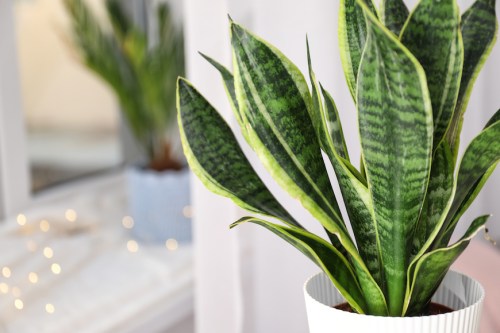Our editors independently select these products. Making a purchase through our links may earn Well+Good a commission
4 Unstoppable Plants That Will Thrive Through Autumn Weather, According to a Pro
Afraid to buy a plant baby as we turn the corner around autumn? Here, an expert shares four indoor plants for fall that can thrive in those conditions.

I’ve made it through the summer as a proud single plant mom—”single” as in, I have one lavender plant baby, and that’s all I can handle—but when someone sweetly delivered an orchid to me the other day, I panicked. I have a feeling that my newfound green-thumb luck in some way correlates with getting a plant in prime, sunny weather. But, as we turn the corner on autumn, I have to wonder: What are the best indoor plants for fall (in terms of life expectancy), and am I going to kill this orchid?
Experts in This Article
former director of brand marketing at The Sill
To address the second question, it’s been three days and one of the stems is yellowing. As for the first question, though, we tapped Erin Marino, plant expert and director of brand marketing at The Sill, to select the best indoor plants for fall. So if you’re thinking of buying a plant but are afraid that the conditions of shorter daylight hours might not be in your favor, think again. Below, Marino offers four eye-catching options that’ll make it through September, October, November and maybe even thrive through the winter, too.
Check out 4 indoor plants for fall that’ll survive and thrive with shortening days.
1. Snake plant
Shop Now: Snake plant, $33
“This no-fuss tropical plant has thin, upright leaves with irregular banding that resembles the skin of a reptile,” says Marino. “Its adaptations for surviving drought make it a suitable succulent plant choice for anyone, anywhere. It prefers medium to bright indirect light, but can tolerate low indirect light.”
“[The snake plant’s] adaptations for surviving drought make it a suitable succulent plant choice for anyone, anywhere.” —Erin Marino, the Sill
Furthermore, your snake plant will hardly get parched—you just need to water it about every three to four weeks, allowing the soil to dry out between waterings, Marino adds. You can increase the frequency if it seems like the plant is getting less lighting. But if all else fails, follow her pro tip: “Wait for your snake plant to wrinkle to know it’s thirsty and time to water.”
2. Pothos
Shop Now: Marble Queen Pothos, $37
The pothos is famously known as the “cubicle plant,” able to thrive in less-than-ideal indoor conditions, says Marino. So if you’re looking for something to grace the desk in your musty little corner, she’s your gal. The easygoing pothos plant is meant to spread out and be magnificent.
“The pothos’s trailing vines can grow to over 10 feet long indoors, making any space look more lush. It thrives in medium light, can tolerate bright, indirect, and low light—but keep it out of harsh direct sun,” Marino says. It likes to be watered every one to two weeks, when the soil dries out completely. Increase frequency with increased light.”
3. ZZ plant
Shop Now: ZZ plant, $57
If you have an almost dungeon-like lighting situation in your place, the ZZ plant is the one for you. It’s considered a succulent, which makes it low-light tolerant, drought tolerant, and low-maintenance in general.
“You might spot large potato-like rhizomes under the surface of its potting mix,” says Marino. “Having evolved in dry conditions, these plants have developed rhizomes that store water to help them survive droughts in their natural environment. The ZZ plant thrives in medium-to-low indirect light, but it can tolerate bright indirect light. It is not suited for intense, direct sun.”
And again, you’ll only need to water every three to four weeks, only increasing frequency with increased light.
4. Philodendron
Shop Now: Philodendron, $51
“Its heart-shaped green leaves, easygoing nature and quick-growing trailing vines make the philodendron our most popular houseplant,” says Marino. “Like the pothos plant, in the right indoor conditions, the philodendron’s trailing vines can grow over 10 feet long. It is the perfect plant for a high shelf or hanging planter.”
She adds that this plant has a reputation for being among the easiest of houseplants to grow—any time of year. “It thrives in medium indirect light, but can tolerate low indirect light. Wilting vines, curling leaves, and dry potting mix are signs your philodendron is thirsty,” Marino says.
Sign Up for Our Daily Newsletter
Get all the latest in wellness, trends, food, fitness, beauty, and more delivered right to your inbox.
Got it, you've been added to our email list.









